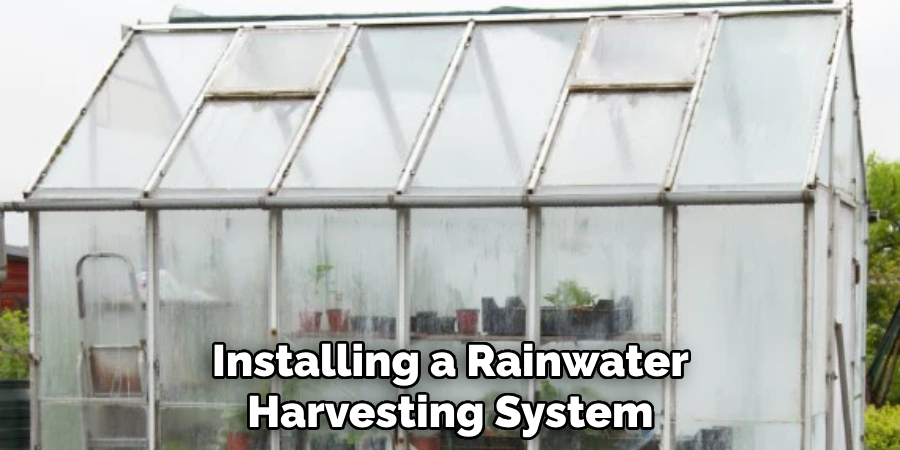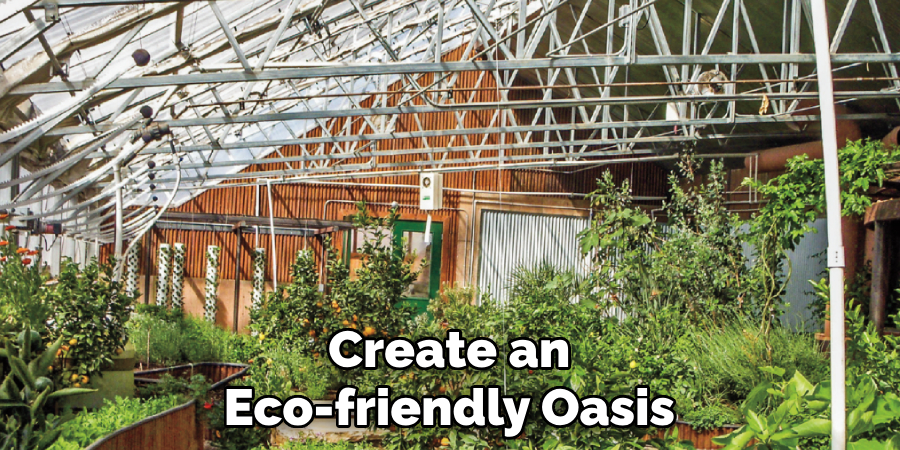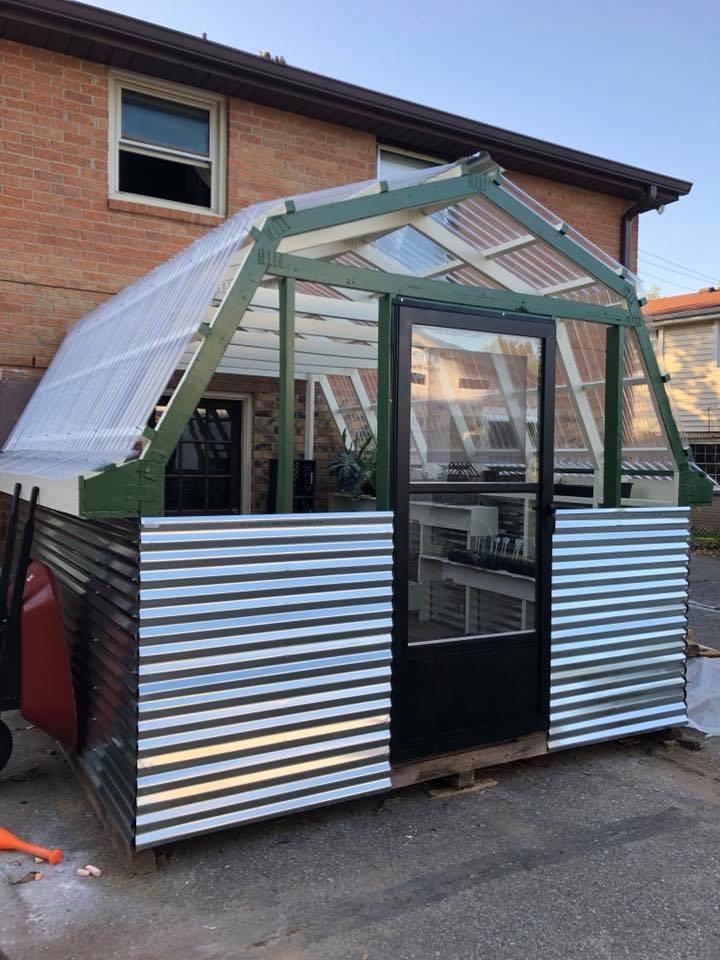To turn a shed into a greenhouse, clean the shed thoroughly, inspect and repair any damages, install windows or clear panels for sunlight, set up shelving for plants, and provide adequate insulation and ventilation for temperature control. With proper preparation and equipment, you can easily transform your shed into a functional and thriving greenhouse.

Credit: www.onecrazyhouse.com
Overview Of Turning A Shed Into A Greenhouse
Repurposing a shed into a greenhouse brings numerous benefits to your backyard gardening experience. By repurposing, you can save money and make use of existing structures. Having a greenhouse allows you to extend the growing season, protecting your plants from extreme weather conditions.
It provides a controlled environment for optimal growth, enabling you to grow a wider range of plants and experiment with different varieties. Greenhouses also offer protection against pests and diseases, reducing the need for chemical pesticides. Additionally, they create a space for you to relax and reconnect with nature, serving as a tranquil retreat in your backyard.
Embracing the concept of repurposing sheds for gardening purposes is a sustainable and eco-friendly approach that benefits both you and the environment.
How to Turn a Shed into a Greenhouse: Step by Step Guide
Assessing Your Shed
When assessing your shed for conversion into a greenhouse, there are a few important factors to consider. The first is the size and dimensions of the shed, as it needs to be large enough to accommodate the plants you want to grow.
Additionally, the structural condition of the shed is crucial, as it needs to be sturdy enough to support the weight of a greenhouse. Another important factor is access to sunlight and water, as plants need adequate light and hydration to thrive.
Before embarking on this project, carefully evaluate these aspects to ensure that your shed is suitable for transformation into a greenhouse.
Preparing The Shed For Conversion
Converting a shed into a greenhouse requires careful preparation. Begin by clearing out and cleaning the shed to make way for your plants. Repair any damages and reinforce the structure to ensure its stability. Then, add insulation to regulate the temperature inside and ventilation for proper airflow.
These steps will create an optimal environment for your plants to thrive. Remember to choose the right materials and techniques for the transformation. With a well-prepared shed, you can successfully turn it into a greenhouse and enjoy growing your own plants.
So, start the process today and bring your gardening dreams to life.
Choosing The Right Location
Determining the ideal spot for your new greenhouse is crucial for its success. Consider sun exposure, wind, and nearby trees or structures to ensure optimal growth conditions. Additionally, it’s important to ensure proper drainage and level ground to prevent any water stagnation or unevenness.
By carefully selecting the right location, you can create an environment where your plants can thrive and flourish. Whether you have a spacious backyard or a small shed, converting it into a greenhouse can be a rewarding project. With the right amount of planning and preparation, you can transform your shed into a haven for greenery and enjoy the benefits of homegrown plants all year round.
So, take the time to evaluate your options and choose a location that meets the specific requirements of your plants. Happy gardening!
Planning The Layout And Design
Planning the layout and design of your greenhouse is crucial. It sets the foundation for a successful transformation of your shed. Begin by deciding on the layout that maximizes space and sunlight exposure. Next, select appropriate shelving and plant containers, ensuring they can accommodate your desired plants.
Incorporate features for water and electricity supply, as they are essential for proper greenhouse functioning. Consider installing a rainwater harvesting system or a water source nearby. Electric outlets should be strategically placed for easy access. Additionally, think about ventilation options to regulate the temperature and humidity inside the greenhouse.

A well-planned and designed layout will ensure optimal functionality and a thriving greenhouse.
Implementing Greenhouse Functions
Implementing greenhouse functions involves installing proper lighting and heating systems, setting up irrigation and water distribution, and creating a suitable environment for different plant species. Adequate lighting and heating systems are crucial for the growth of plants in a shed-turned-greenhouse.
By ensuring the right amount of light and maintaining optimal temperature, you can promote healthy plant growth. Installing an irrigation system allows for efficient water distribution, ensuring that all plants receive the necessary moisture. Additionally, creating a suitable environment involves considering factors like humidity and ventilation to create the ideal conditions for various plant species.
By following these steps, you can transform a shed into a thriving greenhouse that nurtures a wide range of plants.
Enhancing Climate Control
When turning a shed into a greenhouse, enhancing climate control is crucial. Utilizing natural ventilation methods is a smart approach. Installing fans and vents help regulate the temperature effectively. Managing humidity levels is also important for optimal plant growth. These steps ensure the ideal environment for your greenhouse.
Selecting The Right Plants
When selecting plants for a greenhouse, it’s important to consider factors such as temperature and light requirements. This helps ensure that the plants thrive in the controlled environment. Additionally, it’s beneficial to choose plants based on personal preferences and goals.
By cultivating plants that you find visually appealing or that have specific uses, you can create a greenhouse that is both functional and aesthetically pleasing. Whether you opt for flowering plants, herbs, or vegetables, selecting the right plants is crucial for a successful transformation of your shed into a thriving greenhouse.
Enjoy the process of identifying the plants that are most suitable for your greenhouse and have fun watching them grow and flourish in their new space.
Maintaining And Caring For Your Greenhouse
Maintaining and caring for your greenhouse requires establishing a regular maintenance routine. This includes monitoring and controlling pests and diseases to ensure the health of your plants. Additionally, providing adequate water, nutrients, and general care is crucial. Greenhouses create a controlled environment, allowing plants to thrive, but they also require attention to prevent issues.
Regularly inspect your greenhouse for any signs of pest infestation or plant diseases. Implementing preventive measures such as proper ventilation and cleanliness is essential. Watering plants consistently and providing them with the necessary nutrients will help them grow properly. Taking the time to care for your greenhouse will lead to successful plant growth and a thriving green space.
Troubleshooting Common Issues
Troubleshooting common issues when turning a shed into a greenhouse involves addressing temperature fluctuations and extreme weather conditions. Proper insulation and ventilation can help regulate the internal climate and protect plants from harsh outdoor elements. Additionally, managing plant diseases and pest infestations is crucial for maintaining a healthy greenhouse environment.
Regularly inspecting plants, using organic pest control methods, and implementing proper hygiene practices can prevent and treat common issues. By being proactive and attentive to these challenges, gardeners can successfully transform a shed into a flourishing greenhouse suitable for growing a variety of plants throughout the year.
Showcasing The Results

Converting a shed into a greenhouse has endless possibilities and benefits. Its versatility allows homeowners to create an eco-friendly oasis right in their backyard. Seeing the results of these transformations can be truly inspiring, as individuals repurpose their sheds to showcase lush greenery and thriving plant life.
By sharing success stories and experiences from others who have undertaken similar projects, we can learn from their tips and tricks, ensuring our own conversions are successful. The simple act of turning a shed into a greenhouse can have a profound impact on our lives, providing a space for relaxation, gardening, and even food production.
It’s an opportunity to connect with nature, unleash our creativity, and make a positive impact on the environment. So, let’s explore the wonders of shed-to-greenhouse transformations and inspire others to embark on their own rewarding journeys.
Frequently Asked Questions On How To Turn A Shed Into A Greenhouse
Can You Convert A Shed Into A Greenhouse?
Yes, you can convert a shed into a greenhouse by making a few adjustments. Install windows for sunlight, add insulation, and regulate temperature and humidity levels for optimal plant growth. With the right setup, your shed can transform into a thriving greenhouse environment.
What Materials Are Needed For Turning A Shed Into A Greenhouse?
To transform a shed into a greenhouse, you’ll need materials such as glass or polycarbonate panels for windows, insulation for temperature control, shelving for plant storage, and a ventilation system for air circulation. Assess your specific needs and choose materials that suit your climate and gardening goals.
How Much Does It Cost To Convert A Shed Into A Greenhouse?
The cost of converting a shed into a greenhouse depends on various factors such as the size of the shed, the quality of materials used, and the extent of modifications needed. On average, you can expect to spend anywhere from $500 to $5000 for the transformation.
Consider your budget and project requirements before making any purchases.
Conclusion
In transforming your shed into a greenhouse, you have unlocked a world of possibilities for cultivating your own green oasis. By following these simple steps, you can create a space that nurtures plant growth and provides a haven for relaxation.
Utilizing materials like polyethylene sheeting and adding proper ventilation will ensure optimal conditions for your plants to thrive. Additionally, installing shelves or diy plant stands will maximize the use of space and allow for an organized display of your green treasures.
Don’t forget to consider lighting options to supplement natural sunlight and extend growing seasons. With a little creativity and a lot of love for plants, your shed can become a flourishing greenhouse. So go ahead, unleash your inner botanist and turn your shed into a natural oasis!

